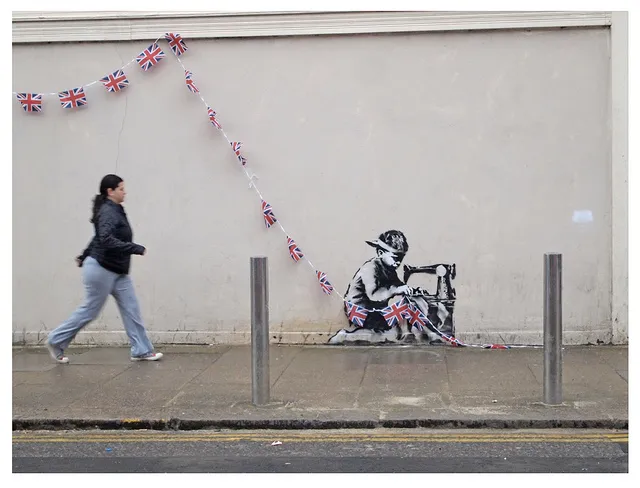Geographic profiling is generally used in criminal investigations. However, a group of researchers at Queen Mary University of London have used this type of profiling to identify the world’s most mysterious artist.
We’ve been following Banksy’s exploits from Dismaland to his artistic statements about the Syrian refugee crisis. All the while, though there have been rumors about Banksy’s true identity as early as 2008, a recent study claims to have all but confirmed Banksy’s real name by basically cross-referencing the locations of Banksy’s pieces with the known addresses of the person he’s rumored to be, all of which is public record.
The big question, though, is how far is too far? Should Big Data be used in this way? Is this too much of an invasion of privacy?
The researchers behind the study assert that their methods can be used in more serious applications:
More broadly, these results support previous suggestions that analysis of minor terrorism-related acts (e.g. graffiti) could be used to help locate terrorist bases before more serious incidents occur, and provides a fascinating example of the application of the model to a complex, real-world problem.
The danger, of course, always being that in the name of “safety,” innocent people can get caught in the net, er, in the SKYNET. According to The Daily Dot:
The National Security Agency’s SKYNET system, revealed in documents leaked by former NSA contractor Edward Snowden, allegedly works by tracking cellphone metadata to determine people’s locations, daily routines, and shared contacts. But information on a group of just seven terrorists was reportedly used to sift through cellular records collected from 55 million people, potentially resulting in innocent people falsely identified as extremists.
What we do with Big Data and how it should be used is a complex issue. However, I didn’t post Banksy’s rumored name here (though you’re more than welcome to follow links if you choose) for a reason.
People have the right to go by whatever name they choose, and that name becomes their “real name.” I can’t feel comfortable unearthing a person’s identity, because there are so many reasons why they may have chosen to keep their birth name hidden – they may be hiding from an abuser, they may be a trans person trying to push their dead name as far away from their current lives as possible. They might even be a controversial politician whose immigrant family changed their name to assimilate and make it easier to move through society free from bigotry. Sure Banksy is “simply an artist,” but it’s not up to us to decide when someone has a right to keep their name private or not.
There are many advantages to having so much information at our fingertips – but I hope that we can figure out how to have access to it while respecting people’s privacy.
(image via Francisco Huguenin Uhlfelder/Flickr)
—Please make note of The Mary Sue’s general comment policy.—
Do you follow The Mary Sue on Twitter, Facebook, Tumblr, Pinterest, & Google +?









Published: Mar 7, 2016 06:13 pm